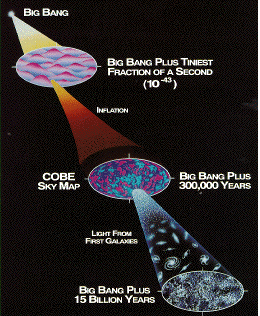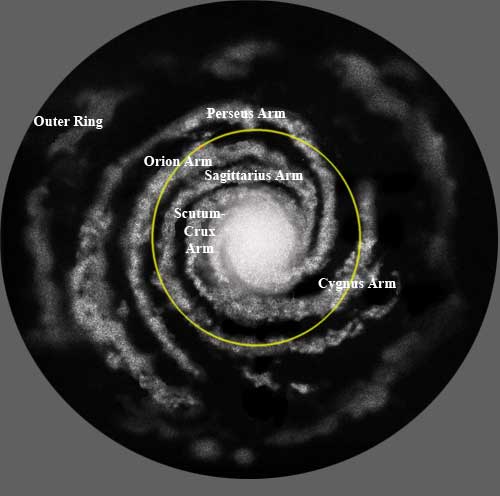(1)
 About 15 billion years ago is what the estimation is of when the Big Bang Theory happened, so, our universe is approximately 15 billion years old. The Big Bang Theory is explained to be a huge explosion that started the expansion of the universe, before this explosion, the universe was extremely compact and the older that the universe becomes, the farther away other galaxies are, because the universe is constantly expanding and has not stopped since the Big Bang explosion, this theory was introduced by Edwin Hubble. The age of the universe was tested by finding out the age of the oldest clusters of stars and estimating the age that they are, the oldest cluster of stars is approximately 15 billion years old. (2)
About 15 billion years ago is what the estimation is of when the Big Bang Theory happened, so, our universe is approximately 15 billion years old. The Big Bang Theory is explained to be a huge explosion that started the expansion of the universe, before this explosion, the universe was extremely compact and the older that the universe becomes, the farther away other galaxies are, because the universe is constantly expanding and has not stopped since the Big Bang explosion, this theory was introduced by Edwin Hubble. The age of the universe was tested by finding out the age of the oldest clusters of stars and estimating the age that they are, the oldest cluster of stars is approximately 15 billion years old. (2)(2)
At the very beginning, "All the matter and energy which is now present in the universe was squeezed into this singularity of infinitely small volume." The Big Bang released tons of energy and matter. As soon as the Explosion occurred, an extremely large fireball formed, this is called the "primordial fireball", this fireball is thought to be as hot as one million billion billion billion (which is 10 with 32 zeros) degrees Kelvin. (3)
(4)
Bibliography
1.) SolarSystem
2.)BigBangTheory
3.)moreBigBang
4.)big bang picture


 (1)
(1) (2)
(2) (1)
(1)